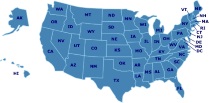How To Homeschool
What's Popular
Mother of Divine Grace School
Sonlight Curriculum
Living Math
40 Awesome Number Activities for Preschoolers
A Letter to Concerned Relatives
Illuminated Ink
How to Choose the Right Materials for Your Child
The Best of All Worlds: Eclectic Homeschooling
Angelicum Academy/Great Books Academy Book Swap and Chat
Designing Your Own Classical Curriculum: A Guide to Catholic Home Education
National Merit Scholarship Corporation
Discover Your Child's Learning Style : Children Learn in Unique Ways - Here's the Key to Every Child's Learning Success
Deschooling on the Road
Name That Country Game
Waldorf in the Home
Resources
The Letter Factory Game
Drawn Into the Heart of Reading
Greenleaf Press
Teach Me to Do It Myself: Montessori Activities for You and Your Child
LeapPad Game - Mind Wars Jr. Interactive Game
For the Learners' Sake: Brain-Based Instruction for the 21st Century
Greenleaf Press
Phonics Pathways
A Reason For® Reading
Beautiful Feet Books
MCP PLAID Phonics
Dumbing Us Down: The Hidden Curriculum of Compulsory Schooling
The Absorbent Mind
A new foreword by John Chattin-McNichols, Ph.D., President of the American Montessori Society, places this classic book in a contemporary context, offering an intelligent discussion of current thinking in child education.
Rhythms of Learning : What Waldorf Education Offers Children, Parents & Teachers (Vista Series, V. 4) (Vista Series, V. 4)
This collection is the clearest introduction to the ideas of Waldorf education currently available. "Rhythms of Learning" contains Steiner's most important lectures on teaching and child development. It is an excellent resource for everyone interested in taking education successfully into the 21st century.
The Mystery of History
KONOS
Shurley English
A Reason For® Spelling
The Complete Home Learning Source Book : The Essential Resource Guide for Homeschoolers, Parents, and Educators Covering Every Subject from Arithmetic to Zoology
Understanding Waldorf Education : Teaching from the Inside Out
Written by a teacher with more than 25 years of experience, this book offers a jargon-free view of Waldorf schools with their philosophy of the importance of a three-dimensional education. Through learning experiences that involve all of the senses, children use a variety of intelligences to develop thought, feeling, and intentional, purposeful activity. Whether you_re a Waldorf parent or teacher, or you just want to learn more about these innovative educational concepts, this book contains important ideas on learning that you can apply today.
Pattern Blocks and Boards
Veritas Press
The Story of the World
- The Story of the World, Volume 1: Ancient Times
- Activity Book One: Ancient Times
- The Story of the World, Volume 1: Ancient Times Audiobook CD, read by Barbara Alan Johnson
- The Story of the World, Volume 2: The Middle Ages
- Activity Book Two: The Middle Ages
- The Story of the World, Volume 2: The Middle Ages Audiobook CD, read by Barbara Alan Johnson
- The Story of the World, Volume 3: Early Modern Times
- Activity Book Three: Early Modern Times
- Story of the World, Volume 3: Early Modern Times Audiobook CD, read by Jim Weiss
Basic Montessori: Learning Activities for Under-Fives
A Child's Story of America
Dr. Montessori's Own Handbook
Spell to Write & Read
H. A. Guerber's Histories
Catholic Home Schooling: A Handbook for Parents
Learning Adventures
Featured Resources
As an Amazon Associate, we earn from qualifying purchases. We get commissions for purchases made through links on this site.




















